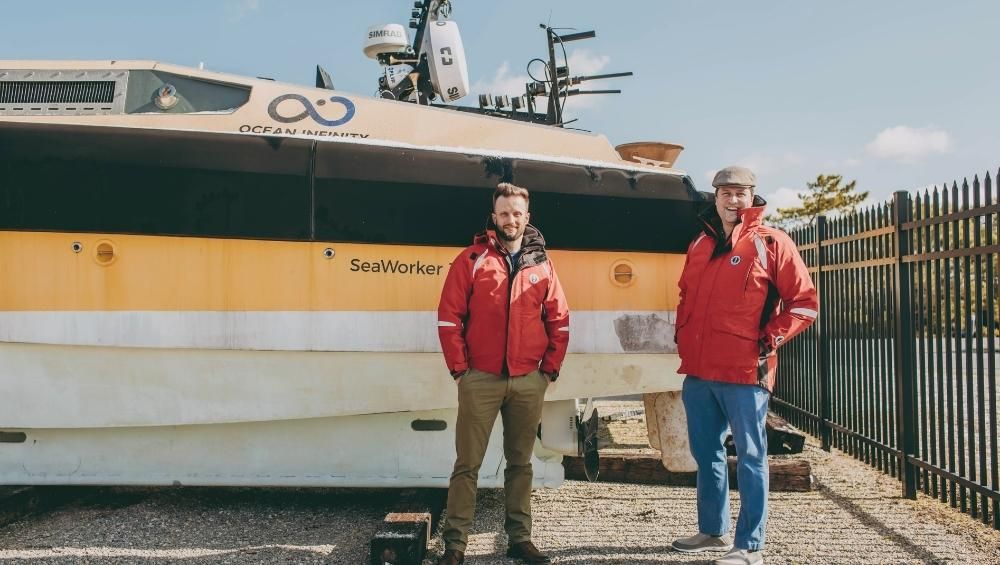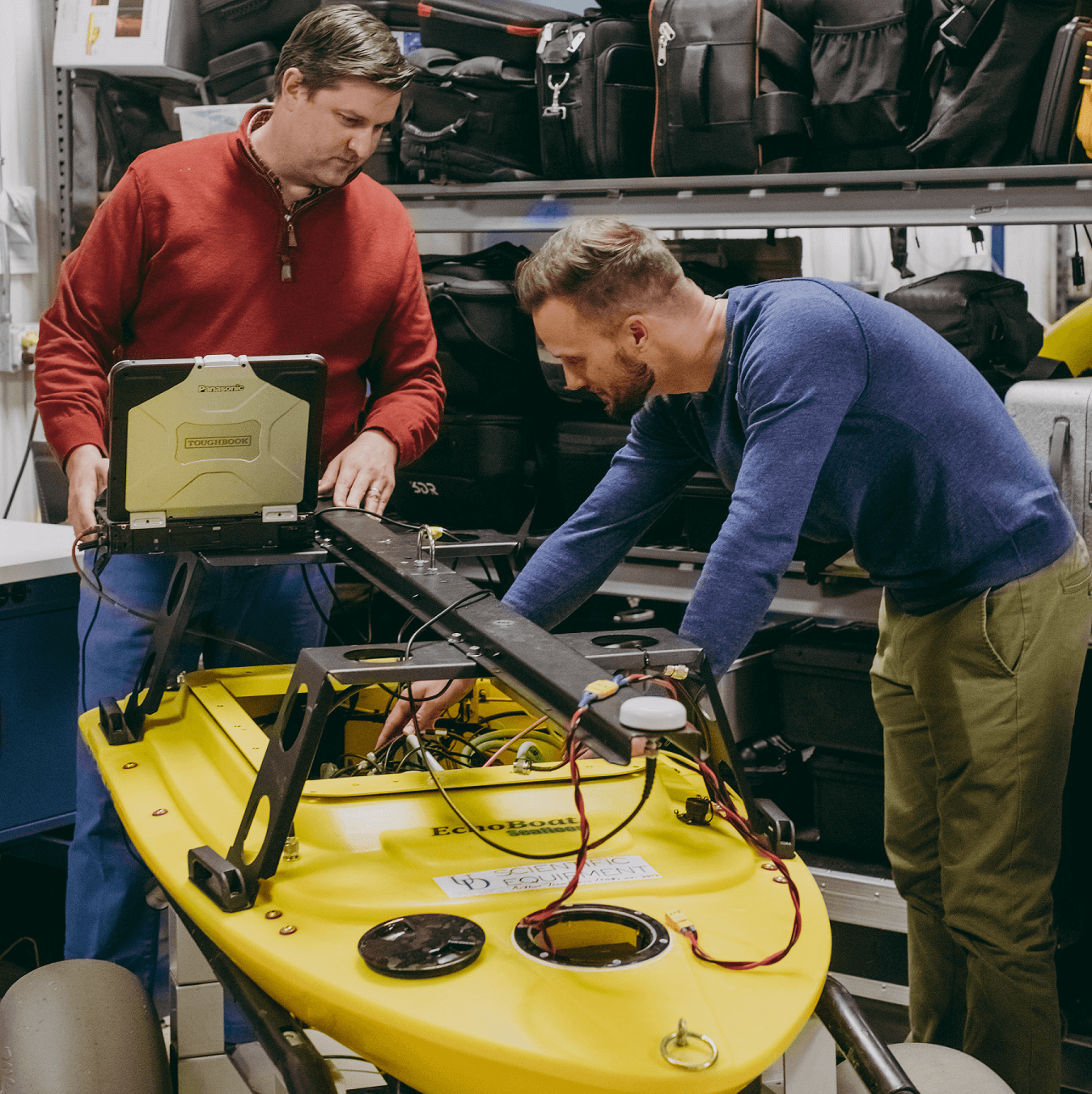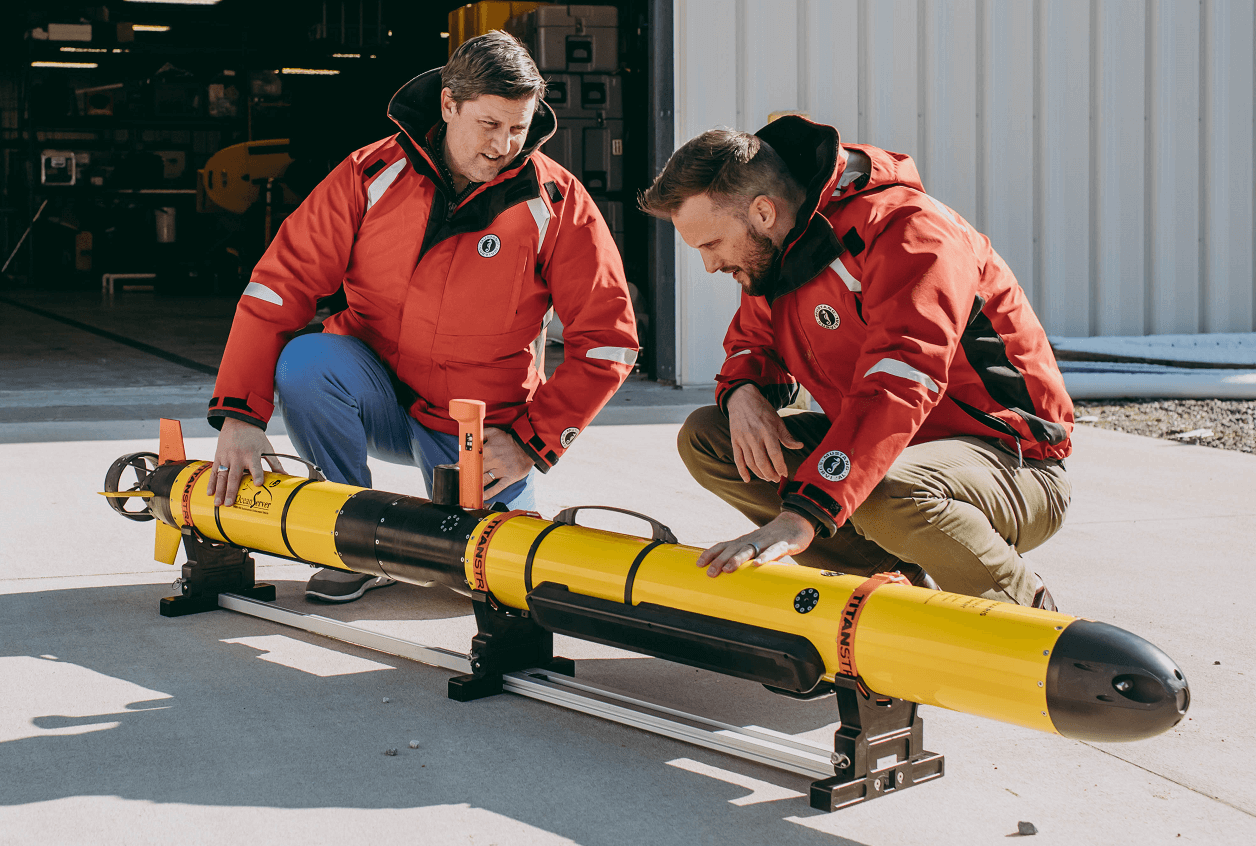Delaware Dives Deep into the Blue Economy

Delaware is diving into the deep end of the Blue Economy, which focuses on all the economic activities related to the coastal and marine environment. This includes everything from transportation and shipping goods to aquaculture, fisheries, offshore wind and mineral resources.
Delaware also is quickly joining the East Coast BlueTech cluster network, which includes Rhode Island, Massachusetts and Maine. BlueTech is a tech innovation focus area that is rapidly growing, attracting new investments and advancing innovations in the Blue Economy and national security.
Delaware has a key advantage the other blue cluster states do not have: offering significantly lower operating costs and an easier path to overcome security, permitting and access requirements for these projects, said Dr. Arthur Trembanis and Rob Nicholson, key personnel helping Delaware advance BlueTech initiatives.
Trembanis is a professor of oceanography and geology at the University of Delaware and deputy director of UD’s Center for Autonomous and Robotic Systems (CARS). He “develops and chases autonomous system robots around the environment.” Nicholson’s background is meteorology and oceanography (METOC) in the U.S. Navy. He’s been involved in business development and technology development throughout his career, and his current Naval Reserves assignment is with the 10th Fleet Cyber Command/Navy Space Command, where he serves as Staff METOC Officer and provides training and operational integration support to U.S. Space Command.
The linchpin for the state’s efforts can be found downstate at UD’s Lewes Campus, home to the Robotics Discovery Lab (RDL), one of the most advanced marine-robotics labs in the country. A sea-grant university since 1976, UD has a rich legacy of marine research and exploration through its College of Earth, Ocean, and Environment (CEOE).
“We’re trying to leverage resources like the RDL and CARS, which is a universitywide robotics initiative that includes master’s degrees in robotics for professional-level training,” Trembanis said. “We have developed credentialing classes you can take through professional continuing studies. For example, you can come take a continuing studies class to become a drone pilot.”
Blue Economy in Delaware
Delaware’s role as a major player in the Blue Economy depend on continued engagement between academia, industry, state and federal agencies, and military groups.
“I think Delaware is a great place to come and conduct testing and evaluation (T&E) with innovative BlueTech systems that have a role in supporting the growing Blue Economy because we offer our unique geographic and oceanographic positioning,” Trembanis said. “We have an estuary system and salt marshes, so we can study areas where there’s fresh water mixing with salt water. We have coastal waters, the Mid-Atlantic. We also have our Inland Bays areas and salt marshes. We’re the lowest-lying elevation state in the nation, which allows us to address key issues around climate change, sea-level rise and coastal resilience. We’re at one with the bays and the ocean, and we are punching well above our weight with what we can offer groups wishing to develop and test new technologies.
“The holy grail is we want to improve the economy while we improve our understanding and stewardship of the planet.”

These efforts have been enhanced by the launch in early 2021 of the Ratcliffe Eco-Entrepreneurship Fellows (REEF) Program at the University of Delaware, led by Dr. David Lawson. REEF provides students with tuition support and stipends to pursue ideas for entrepreneurial, commercial solutions to environmental problems. It’s a partnership between the University’s CEOE and Horn Entrepreneurship programs and supported by the Ratcliffe Foundation.
“I think the REEF Program was a real first flag in the ground,” Nicholson said. “Dr. Lawson did not rely solely on the university or the state. He came from Procter & Gamble and retired here with a wealth of knowledge and experience in Open Innovation best practices. He asked if we were doing anything with innovation, and the answer was, ‘Well, kind of, not really, I don’t know.’ He worked across the university system and landed a large grant to stand up that innovation and entrepreneurship program. It allowed us to leverage the successes there and build something around.”
According to Nicholson, innovation entrepreneurship typically is an afterthought. Leading with that, he says, was a clever approach.
“What REEF has done is provide a home and inspiration for students who are environmental scientists or engineers, environmentally minded with an entrepreneurial mindset,” Trembanis added. “For many years, if students said they wanted to form a company, for example, to help address microplastics in the bay or develop sustainable fisheries, you’d have to tell them to take a biology class and then go over to the business school. Now we can tell them we have an outlet where they can develop their entrepreneurial skills and the program has an ecosystem of resources, services and funding to help scale those new ventures.”
Along with a Navy Educational Partnership Agreement, UD has signed partnership and internship agreements with Ocean Infinity America, the Navy Surface Warfare Center and the U.S. Naval Academy. It also has a track record with the National Oceanic and Atmospheric Administration and the U.S. Coast Guard. A Congressionally Directed Funding proposal for a Blue Economy Tech Center also has been approved.
Delaware is also leading development of an NSF Engineering Research Center proposal, which would be a 10-year program that includes the University of New Hampshire, Rhode Island, University of Pennsylvania, Delaware State University, University of South Carolina, University of Puerto Rico and a host of commercial partners focused on developing autonomous systems (environmental robots) and sensors and platforms to address coastal resiliency, to better understand the impact that sea-level rise or a hurricane or Nor’easter would have on our coastline.
“Part of laying the groundwork for this is bringing people in for campus visits,” Trembanis said. “People come in, they see the lab, they see the environment, and they say, ‘Oh, you’ve got these ships, you’ve got these researchers, you’ve got all this activity going on. I didn’t realize this was going on here at Delaware.’”
Both Nicholson and Trembanis believe Delaware is well-positioned from both an innovation perspective and an economic development and workforce development perspective.
“It’s a day trip for a lot of folks who are scientists, engineers and leadership in the D.C. area, as opposed to going all the way to Rhode Island or Norfolk,” Nicholson said. “But more than that, think about all the jobs when it comes to the 14 wind farms that have already been approved. With all the turbines that are going up, there’s going to be a need for service companies to evaluate, inspect and maintain these turbines. “
Ocean robotics offer multiple uses for data collection, surveillance and inspection capabilities that cut across traditional industries like oil and gas, offshore wind and fisheries. This is unique that these BlueTech systems can serve several industry sectors.
“Ocean robotics are a ‘tractor’ with multiple missions – (environmental DNA) sampling, which is environmental collection for aquaculture locations,” Nicholson said. “You can use them one day to sniff out some nutrients and check on the health of the fish and make sure there’s not contaminate buildups and things like that. And then you can re-mission that same platform, depending on the sensor suites, to do a coastline survey right before a hurricane hits, and then you can transition the next week to do post-storm wind-turbine inspections – all with a very similar system and setup.”
There are a lot of benefits to the Lewes Campus being the “Triple-A ballfield,” as Nicholson describes it.
“That’s evident in some of the work that the RDL team has conducted with some of the larger federal contractors and some of the proposed work ahead of us with the Navy and some of the other DOD partners,” he said. “Not surprisingly, there’s a little bit of expected congestion around some of these Blue Economy participants in understanding how they interact with each other and how they work together or minimize the impact of the work that they’re independently doing in and around a more robust ecosystem of maritime activities.”

Pharmaceutical and fintech operations, regardless of whether big blue chip or a small company, know they can quickly come in and plug in to Delaware. Trembanis and Nicholson agreed that they’re starting to see more Blue Economy companies take up residence in the state or “beat on our door” to come in and do testing and research and development.
Nicholson believes that Delaware will be considered part of the BlueTech cluster network within the next two years. He said they’re actively engaging with key players in the industry that can help make it happen.
“A BlueTech cluster isn’t just cool robots. It’s a diverse economic ecosystem,” he said. “It’s got a little bit of offshore wind, it’s got some academia, it’s got some industry partners, it’s got some federal partners, it’s got some engineering, and it’s got a little oceanography. We have the ingredients. I think we just need to get it into a big pot and really start to cook it.”
Newsletter Sign Up
Stay Up To Date With Delaware